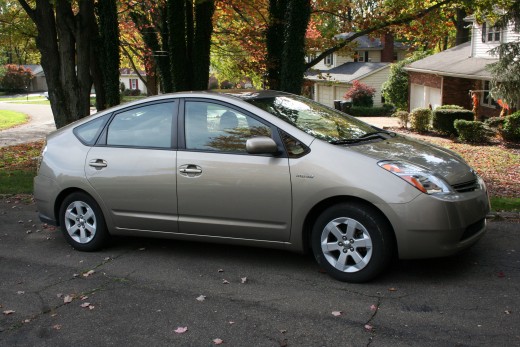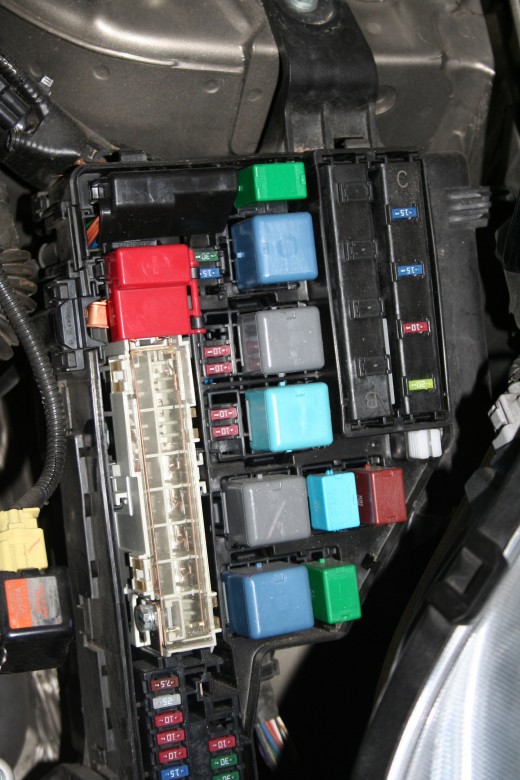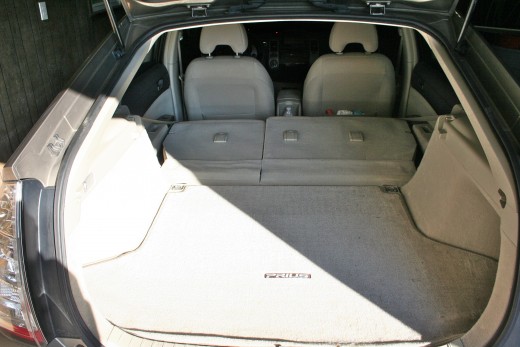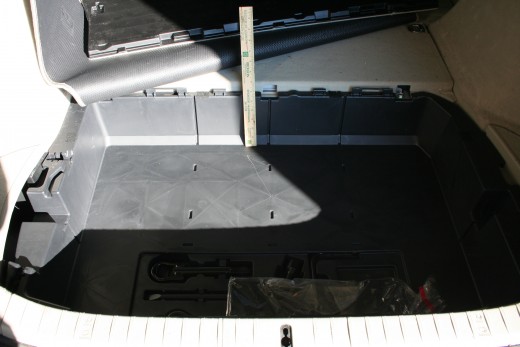Prius Redux
A Second Look at a first-rate car
On June 30th in 2008 I wrote a “hub” about our second Prius. The intent of that article was to debunk some popularized myths about hybrids.
2007 Prius

How we came to buy our first Prius
Now, more than five years later, I think it’s time to revisit Prius-land and share a little more information—not just about our car, but about cars in general—especially one tip we got from a roadside mechanic.
I’ll start with this fact: we haven’t just owned Toyotas. My first two cars were 1955 Chevys. The next was a 1962 Chevy, and after that came two VW Beetles, a VW Squareback, a Plymouth Sebring, a Plymouth Gran Fury, a 4-door Volvo, a Dodge compact wagon and a Dodge Intrepid.
So why did we ever buy a Toyota? Well, it’s like this. Our oldest son went with me one day to look at new cars and, driving by the Toyota dealership, he spotted a dark blue 4-door sedan in the lot and said, “That looks neat. Let’s check it out.”
The car was a 1989 Camry, and after we’d looked under the hood, examined the interior and took it for a test drive, we started to talk prices. When we were close to some serious dealing, the sales person asked me, “How many miles do you want to put on this car?” On impulse, I made up a random number: “Oh, about 200,000.”
His answer stunned me. “Fine. Just change the oil and filter every 5,000 miles. That’s all you’ll ever have to do.” I was sold, and we bought the car, after bring my wife over to take a look at it.
We had that Camry for ten years and never did anything to it, except change the oil and filter every 5,000 and put on new tires every few years. In 1999 we sold it for $1,500—with 229,000 miles on the odometer.
The next car we sold was our Intrepid, a large nice car that got fairly good mileage—about 27 mph on the highway. We owned that car for eight years and sold it in 2002 for only one reason: just six months after purchasing the car, it was hit by a driver who tore through a red light. We had the car repaired and it looked and drove fine, but the front end was never the same. It ‘ate’ front radial tires in no time (like every 6 months) and it chewed up and spit out front tie rods and bearings faster than we could raise the money to buy them.
So, we needed a new car, and since we’d had such good luck with the Camry (sold about that same time) we decided to check out new Toyotas, and that’s when we purchased our first Prius . . . in 2002. Five years later we bought its ‘cousin,’ which brings me to the double reason for writing this “hub.”
We’ve had that second Prius now for five years and eight months. Currently the odometer stands at 121,229.
Actual mileage, as of Oct. 21, 2013

Our second Prius' maintenance record
At this point, (hence the first reason for writing this article) a logical question might be: ‘What have you done to it in terms of repairs?’ And the answer is, nothing—except for replacing a water pump (done under warranty). That’s right: NOTHING.
We had one recall to check the gas pedal (some of them reportedly got stuck, though our car didn’t have that problem, something we already knew from driving it a lot. But that’s been it’s only visit to the dealership, other than changing the oil and filter every 5,000 miles and doing maintenance at the prescribed intervals.
As for replacing equipment, well—I have to admit we put in a new set of spark plugs at 120,000 (that was part of routine maintenance, the only swapping of plugs so far) but the original brakes, exhaust system and every other part of the car are still intact and work just fine. Even the hybrid battery system is performing as promised.
Still, in all honesty, I have to admit we did run into one other problem with our Prius this past Sunday, on October 20th. We’d planned to go out to eat and then buy some thread my wife needed for a sewing project she’d been commissioned to do.
- art to wear - fiber arts online shop specialized in handwoven fabrics and clothing. Restoration Craf
Jozette Welsh Stubbe RESTORATION CRAFTS - Weaving
What? The car won't start! Help!
But when we got to the garage, our ‘baby’ Prius was ‘dead as a doornail!’ Not only wouldn’t it start, nothing would even light up. Worse yet, the ‘smart’ key wouldn’t function and so the rear hatch over the luggage compartment (where the starter battery is located) was locked and couldn’t be opened manually either, though following directions in the owner’s manual.
What to do? Well, I did the expected thing. I called AAA and they sent out a road mechanic named Ruben. When he checked in with me by phone, I told him about the problem and asked if he knew much about hybrids. He said, “I’m no expert, but I’ll come out and see what I can do.”
Once Ruben arrived, he introduced himself and said, “Pop the hood for me.” I told him the starter battery was in the rear and reminded him that the hatch was locked and wouldn’t open, but he just said again—in a much sterner voice, “Pop the hood for me.”
I did, though I couldn’t resist telling him, “But you won’t find any battery in there.” He lifted the hood, hooked the support in place, asked for a flashlight, took off a plastic cover near the left fender and then unsnapped a pair of red plastic covers.
The magic compartment!

On the road again!
“See that,” Ruben asked. “That’s your ‘hot spot.’ Every car has one under the hood. I don’t care what make it is, or where it came from. That’s what you look for, and that’s where you jump it from.” Ruben got his portable power pack, hooked it up and told me to try starting the car. I did . . . and it did!
By now, you may be wondering what was wrong with our Prius, causing the battery to run down. The answer: the IDIOT (that would be me!) who left the driver’s door ajar for two days.
All of which brings me to the second reason for writing this “hub.” Maybe you’ve very familiar with cars and already know where to find those small posts useful for charging/starting your prize car. But if not, NOW YOU KNOW, thanks to Ruben.
As for our Prius, it’s doing just fine two days later. Our car is charged and running as dependably as ever. After over 5.5 years we still average 47 to 52 mpg—combined city and highway driving—and find it one of the most comfortable cars we’ve ever taken on long trips.
Speaking of which, we leave for our home in Florida a week from now and that means packing all we need to take with us for the next seven months, and that requires a filled car—while leaving enough room on top of the load for us to see out of all the windows and make use the rear-view mirror (my wife’s rule), even though we have two side mirrors and a back-up camera on board.
Fortunately our Prius has lots of luggage room, despite it’s small appearance.
Our 'stuff' goes here!

Secrets of packing - but no 'preview' look
It also helps to have a wife who’s a whiz at packing things. And, as a consequence of tearing apart the luggage compartment from the inside while searching for the elusive (and we think non-existent) emergency lever to unlock the rear hatch and not finding it—“Toyota, rewrite the manual!” we discovered an additional compartment over the spare tire and beneath the carpeted lid, 9.5 inches deep, that can hold even more of our stuff.
Aha! More space, more stuff!!

Summing up . . .
In conclusion, it’s obvious the days of changing oil and filter every thousand miles, bias-ply tires that go bald this side of 20,000 miles and carburetors with ‘butterfly’ valves that need to be adjusted for summer, winter and mountain driving are long gone. Now cars are much more efficient and dependable, with more model hybrids on the road than you can name.
All of which brings me to one last comment. Though both of my Prius articles make it clear that we like these cars and will buy another in due time—either a more basic model or perhaps a Prius V—regardless of which car we (and you) decide to purchase next, I suggest that you do what we’ve profited from over the years:
#1 - Have all preventive maintenance done at the prescribed intervals, and . . .
#2 - Be sure to look under the hood for that ‘hot spot,’ just in case.





